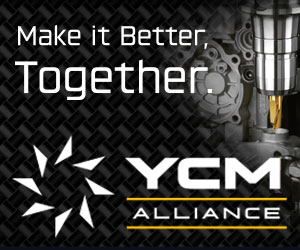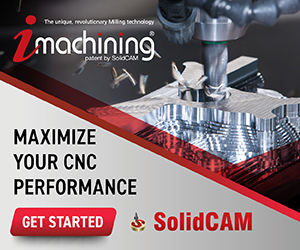The New Rules of Cutting Tools — Introduction
Sponsored ContentCutting tool technology is evolving rapidly to respond to changing demands and more challenging workpiece materials. Shops today need to look at cutting tools differently. They need to look at cutting tool suppliers differently as well.
Share
In the metalworking industry, there is no other choice except to adopt advanced technology. The machining demands that are soon to come are so great, only advanced technology will be able to meet them.
Chris Mills, project manager for aerospace development with Sandvik Coromant, points to the aerospace industry as an example. To meet the manufacturing requirements of the aerospace industry in 20 years, machining capacity will need to triple between now and then. How will this happen?
Will the tripling of machining capacity involve simply tripling the number of machine tools, with the machining processes remaining as they exist today?
Not likely, he says. Multiplying the existing machine tools at current levels of technology would mean multiplying the number of machine tool operators to the same extent. That’s hard to imagine, since machining facilities are having difficulty enough hiring qualified people to staff their machines today.
No, the tripling of capacity will have to come from technology advances that allow the existing amount of metalworking personnel to oversee a vastly larger quantity of work.
So where will these technology advances come from?
Machine tools are certainly evolving. They are getting faster and more accurate. However, the workpieces themselves are not just evolving in the same incremental way, they are fundamentally changing. Machined workpieces today are not just defined by more demanding accuracy, delivery and quality requirements, but increasingly they are also made of difficult-to-machine materials that many shops have never faced before. These materials include titanium alloys, nickel-based alloys and compacted graphite iron (CGI), not to mention engineered composites in the growing number of cases where composites are replacing metal.
In other words, workpieces today are evolving faster and more dramatically than the machine tools that cut them. There is a gap between machines and parts—and to close that gap, as well as surpass it, the most significant technology gains in metalworking today are coming from cutting tools.
The cutting tool—along with the role of the cutting tool supplier—is changing more rapidly than any other part of the machining process.
In fact, so much about cutting tools has changed that any progressive machining facility today needs to step back now to re-evaluate its cutting tool thinking. It is not only specific choices in tools that need to be examined. Fundamental assumptions affecting all of the shop’s tooling need to be re-examined, as well. Some of those core assumptions are bound to be outdated today, because the rules of cutting tools have changed.
Three major cutting-tool-related companies recently provided insights into how machining facilities now need to think about tooling differently. Those companies are:
Diamond Innovations, the world’s leading supplier of cubic boron nitride (CBN) and polycrystalline diamond (PCD) materials for tools.
Precision Dormer, the union of two cutting tool companies that both offer decades of high-productivity drilling and threading expertise.
Sandvik Coromant, the world’s number-one metalworking cutting tool supplier.
Engineering experts at all of these companies cited a variety of factors that are influencing the nature and use of cutting tools today. Just a few of those factors include:
■ Challenging materials, including both alternatives to metals and hard-to-machine alloys. Some of these materials can be less than 25 percent as machinable as steel, and can cost hundreds of dollars per pound.
■ Increasingly complex geometries, such as the thin walls and complex shapes of aircraft parts.
■ Large component sizes, particularly as the demand for turbines and various types of heavy equipment increases. The high cost per part makes the machining demands for these parts that much more critical.
■ Increasingly specialized quality and performance requirements, such as the fatigue demands typical of machined aircraft surfaces.
Factors such as these are driving the new ways that leading shops now think about their tooling. Specifically, Diamond Innovations, Precision Dormer and Sandvik Coromant point to at least five ways that machine shops and machining facilities must now think differently about their tooling technology and the companies that provide it.
Here are the new rules of tooling:
1. Do More With Your Machine
Don’t just choose cutting tools for greater life or speed. Innovative tooling also transforms the process and expands what the machine can do.
2. Demand Application Expertise
Given the expanded range of choice in tooling technology, an essential component of the cutting tool has to be the expertise of the organization behind it.
3. Diamond Should Not Be Rare
Diamond tooling lets the machine do more, and also figures into expert solutions tailored to more demanding applications.
4. Focus On The Biggest Sources Of Expense
The price of a cutting tool is tiny compared to the cost savings it can realize in other areas of the process.
5. Consider The Cutting Tool From The Very Beginning
Don’t just “tool up” the machine as an afterthought. Choosing the tooling from the outset can help ensure that the machine is right for the job.
A special series of articles, accessible at www.mmsonline.com/articles/the-new-rules-of-cutting-tools, explores each of these five rules in more detail. To allow your plant or shop to profit from the pressures today that will shape the machining needs of tomorrow, take a fresh look right now at the ways you are thinking about cutting tools.




.png)











.jpg)








